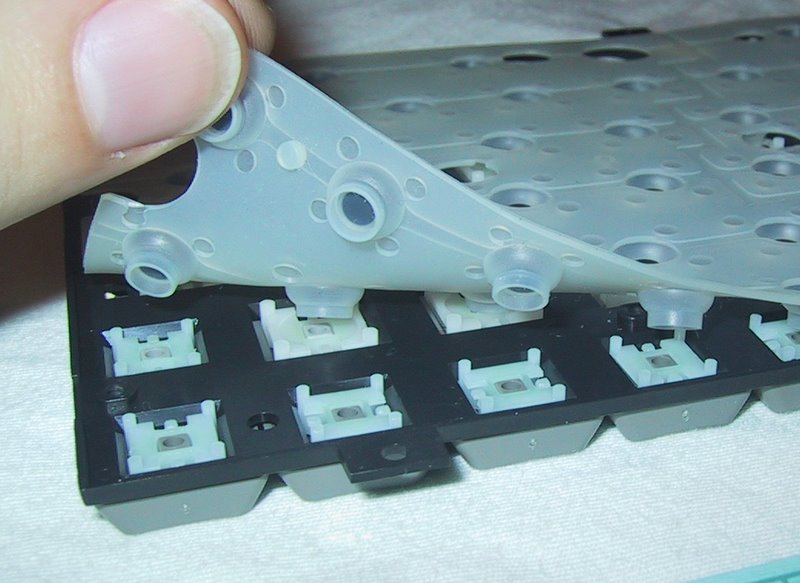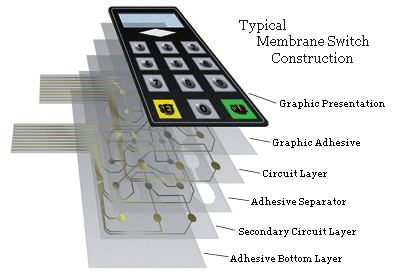Every profitable product line begins with partnering with the right membrane switch manufacturer early on.
Every profitable product line begins with partnering with the right membrane switch manufacturer early on.
Blog Article
Everything About Membrane Switch: Understanding Its Style and Capability
When you think regarding the control user interfaces in modern tools, membrane switches often come to mind. Let's explore what collections membrane changes apart from various other control systems.
What Are Membrane Layer Buttons?

Their seamless nature makes them easy to tidy and immune to dust and dampness, an important feature in several atmospheres. Membrane layer switches can also be customized pertaining to form, size, and graphics, allowing makers to produce special user interfaces customized to particular products. And also, they're light-weight and thin, which aids in minimizing the general bulk of devices. On the whole, membrane layer switches play a considerable duty in boosting individual experience throughout a large array of applications.
How Membrane Layer Switches Work
When you push a key on a membrane button, it triggers an uncomplicated yet effective mechanism. membrane switch manufacturer. The top layer, frequently made of versatile product, presses down onto a conductive layer underneath it.
You'll see that the responsive comments differs based on the switch style, using either a soft click or a much more pronounced response. When you launch the trick, the membrane layer go back to its original setting, resuming the circuit and stopping the signal. This procedure happens virtually instantaneously, making certain a responsive individual experience.
Membrane layer buttons are popular due to their longevity and resistance to dirt and dampness, making them perfect for different applications, from family appliances to medical gadgets. Recognizing this operation helps you appreciate their extensive use.
Secret Components of Membrane Layer Switches
Understanding the key parts of membrane layer switches is fundamental for grasping their capability and style. The safety layer guards versus ecological elements and use, prolonging the button's life-span. By understanding these components, you'll obtain understanding into exactly how membrane layer switches over operate and their importance in numerous applications.
Products Made Use Of in Membrane Layer Switch Style
The performance and toughness of membrane switches greatly rely on the materials utilized in their design. You commonly run into polyester and polycarbonate as main substratums due to their outstanding stamina and adaptability. These materials withstand scrapes and chemicals, making them ideal for demanding settings.
The conductive layers commonly use silver or carbon, selected for their dependability and conductivity. membrane switch manufacturer. Silver supplies superior performance, while carbon is a cost-efficient choice. For the overlay, you might take into consideration a matte or shiny coating, relying on your aesthetic needs and individual experience
Make certain to pick adhesives that stand up to environmental factors like temperature and humidity. Picking the appropriate products will certainly guarantee your membrane switch stands the test of time.
Layout Considerations for Membrane Switches
While designing membrane switches, it's essential to take into consideration various factors that influence their performance and individual experience. Start by concentrating on the design and button size; make certain they're intuitive and easy to navigate. Think about the responsive responses you want to supply-- will individuals need an obvious click or a softer touch? In addition, believe concerning the products you'll make use of, as they'll impact toughness and appearances.
Verify your style fits environmental elements, like moisture or temperature level variants, which might impact performance. By very carefully considering these aspects, you'll develop a membrane button that improves use and satisfaction.
Applications of Membrane Buttons
Membrane layer switches are functional components discovered in numerous applications, from commercial equipment to consumer electronics. You'll see their effect in equipments that require resilient user interfaces and in gadgets that profit from sleek designs. Comprehending these applications aids you appreciate the functionality and usefulness of membrane layer buttons in everyday technology.
Industrial Tools Use
When you're looking to boost the functionality of commercial tools, membrane layer switches provide a trusted remedy that combines resilience with straightforward design. These switches are best for severe atmospheres, offering resistance to dust, wetness, and chemicals. Accept membrane layer buttons to simplify your procedures and boost total performance.
Customer Electronic Devices Assimilation
In the domain name of consumer electronics, membrane buttons play a vital role in improving individual interaction and tool functionality. You'll discover them in devices like microwaves, push-button controls, and gaming consoles, offering a seamless way to connect with technology. Their sleek design permits very easy assimilation right into various items, making controls instinctive and user-friendly. With their capacity to integrate graphics and backlighting, you can take pleasure in a contemporary aesthetic that enhances the gadget's total look. Membrane layer switches also assure resilience and resistance to dust and wetness, expanding the lifespan of your electronics. By picking membrane switches, you enhance not just the performance however likewise the style of your devices, making daily communications smooth and delightful.
Advantages and Drawbacks of Membrane Switches
While membrane layer switches use a variety of advantages, they additionally include some downsides that you ought to take into consideration. One significant benefit is their compact style, making them perfect for space-constrained applications. They're additionally affordable, giving a resilient remedy with a low production price. On top of that, their smooth surface area is easy to tidy, improving hygiene in environments like medical facilities.

Nevertheless, there are drawbacks. Membrane switches can have a much shorter life expectancy compared to mechanical buttons, specifically under heavy use. They can additionally be much less tactile, which could affect customer feedback throughout procedure. If damaged, repairing them can be challenging and commonly needs full substitute. Eventually, their sensitivity to extreme temperature levels and ecological conditions may limit their efficiency in specific settings. click for info Stabilizing these pros and cons will help you determine if membrane layer buttons are the right fit for your job.
Regularly Asked Questions
For How Long Do Membrane Switches Over Usually Last?
Membrane switches over typically last in between 5 to one decade, depending on use and environmental conditions. You'll intend to review factors like wear, direct exposure to dampness, and temperature level changes to gauge their longevity properly.
Can Membrane Layer Switches Over Be Custom-made for Details Styles?
Yes, you can customize membrane layer buttons to fit certain styles (membrane switch manufacturer). You'll have the freedom to select shades, shapes, and designs that match your job's needs, official site ensuring they blend flawlessly with your overall aesthetic
What Is the Cost Range for Membrane Switch Manufacturing?
The expense variety for membrane button production usually falls between $1 and $10 each, relying on aspects like design complexity, amount, and products. You can obtain quotes from manufacturers to locate the very best option.

Are Membrane Layer Switches Water-proof or Immune?
Membrane switches can be designed to be water-proof or resistant, depending upon materials made use of and construction techniques. If you require them for wet settings, assure you specify those needs throughout the layout procedure.
Exactly How Do Membrane Layer Changes Contrast to Standard Buttons?
Membrane layer switches are typically thinner and extra flexible than traditional switches, supplying a visit this page smooth style. They're usually less complicated to cleanse and integrate, but might not provide the responsive responses you're utilized to with mechanical alternatives.
Final thought

Report this page